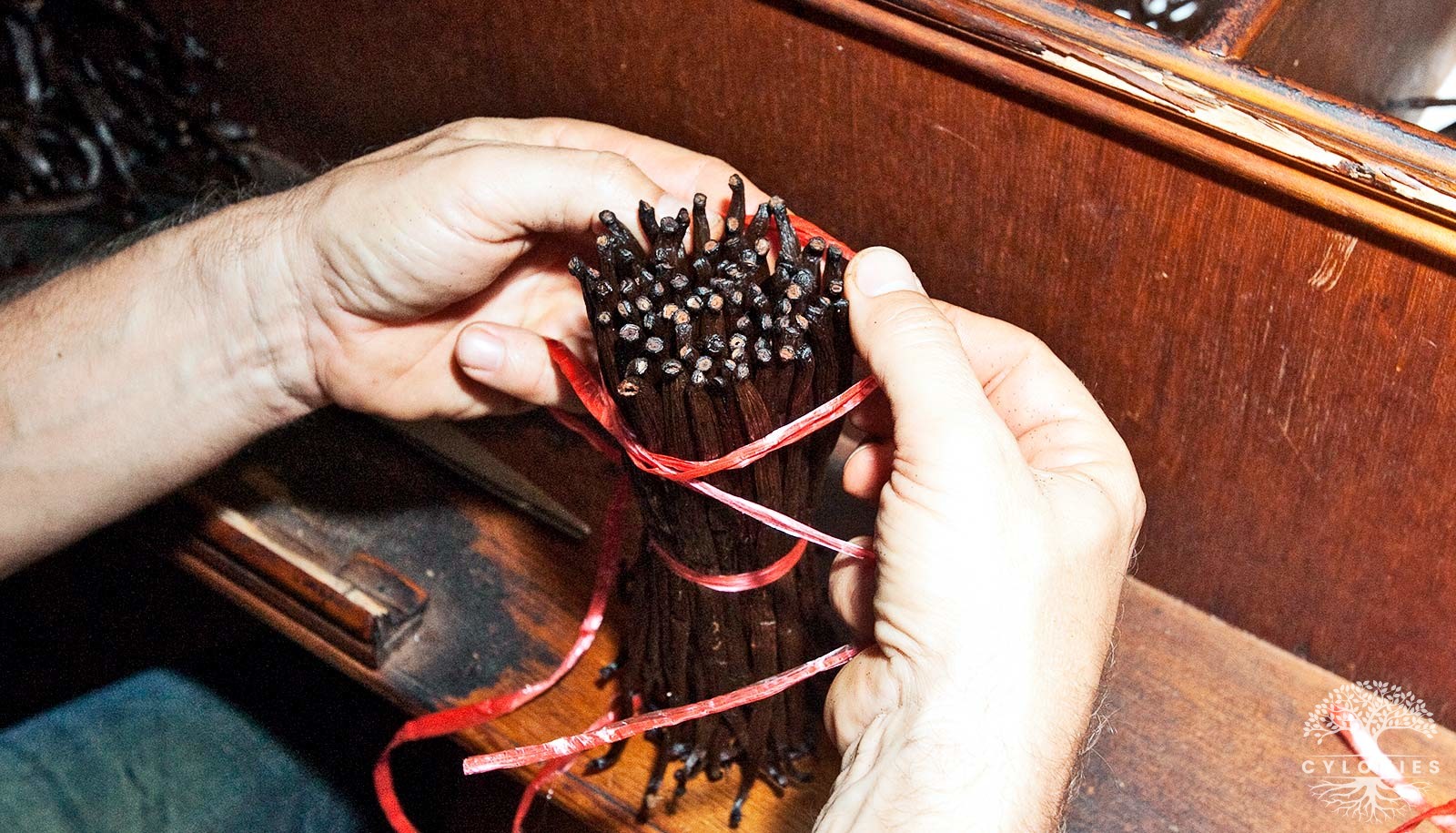Unveiling the Aromatic Majesty of Ceylon Cloves
апр 22, 2024

Vanilla is a well-known and one of the most widely used flavoring substances in the world. It is popular because of its pleasant flavor and peaceful scent.
Vanilla is extracted from the mature pods of various orchids, commonly Vanilla planifolia; is a perennial climbing plant of the family Vanillaceae ( Orchidaceae ).
There are roughly 110 species in the genus Vanilla Swartz. The genus is abundant in the Pacific Islands (3 species), tropical America (52 species), Southeast Asia and New Guinea (31 species), Africa (14 species), and Indian Ocean islands (10 species).
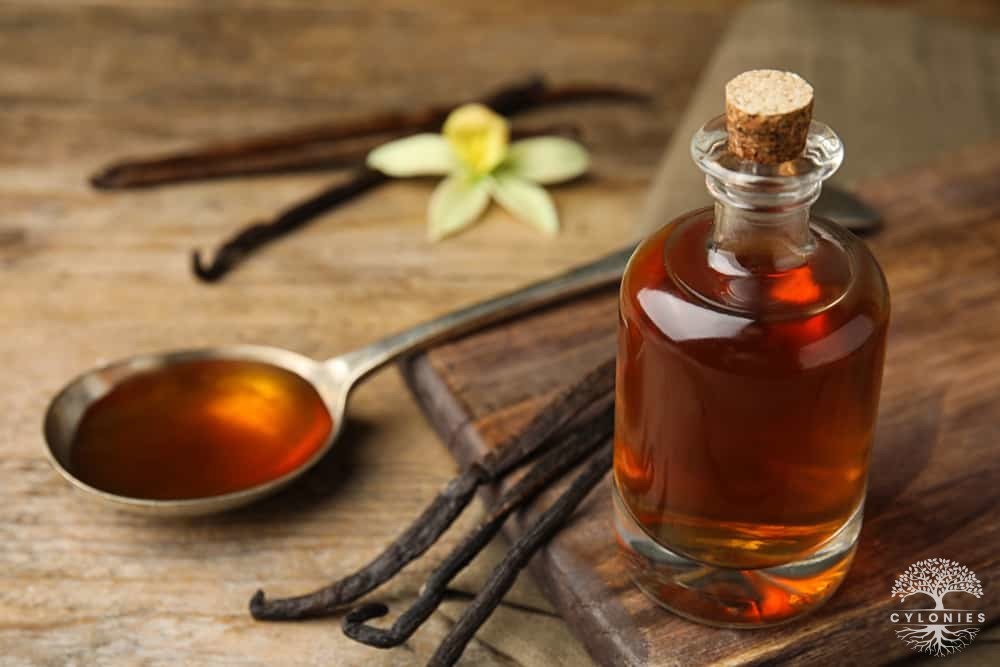
Vanilla pods/ beans are mainly originated in Mexico and Central American nations like Costa Rica and Honduras. The term "vanilla" comes from the Spanish word vanilla, which means "small black pods."
The vanilla plant's family name, Orchidaceae, is derived from the Greek word orchis.
Vanilla was introduced to Europe by Spanish Conquistadors in 1520, and approximately 300 years later, with the discovery of manual pollination of vanilla blossoms, commercial production of vanilla began.
Nowadays, Vanilla extract and vanilla beans are used in a variety of goods including food, fragrances, and pharmaceuticals.
Along with saffron and cardamom, it is one of the world's three most costly spices!
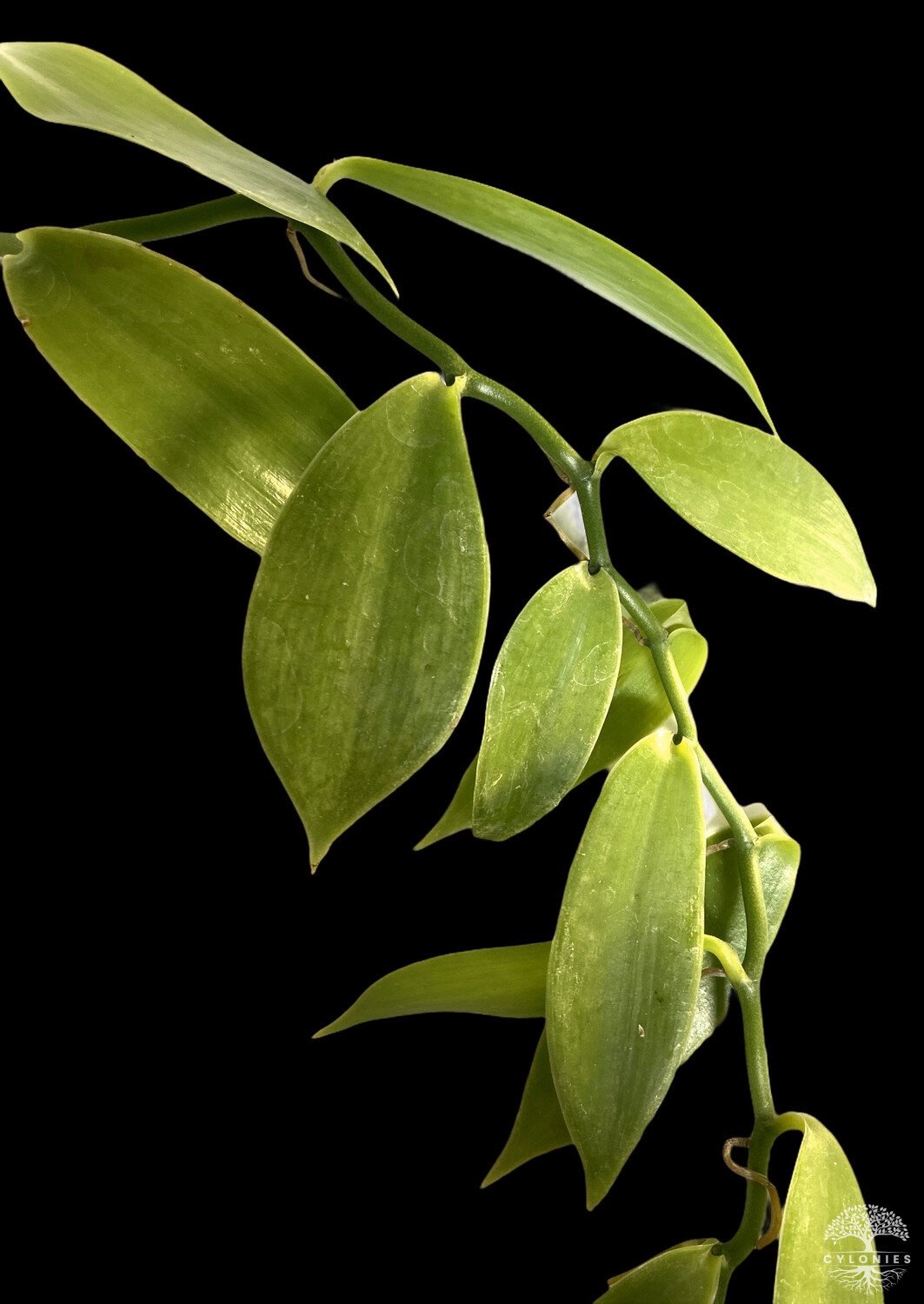
Vanilla is a creeping plant that may reach a height of 15 meters.
The leaves are 6 to 9 inches long, sessile, thick, and elliptic. It is linked to trees and climbs through their roots. The roots are white, aerial, and long, with a 2 mm diameter.
The veins shoot out roots that grow opposite the leaves and adhere to trees. Vanilla is grown in open fields with the help of shade.
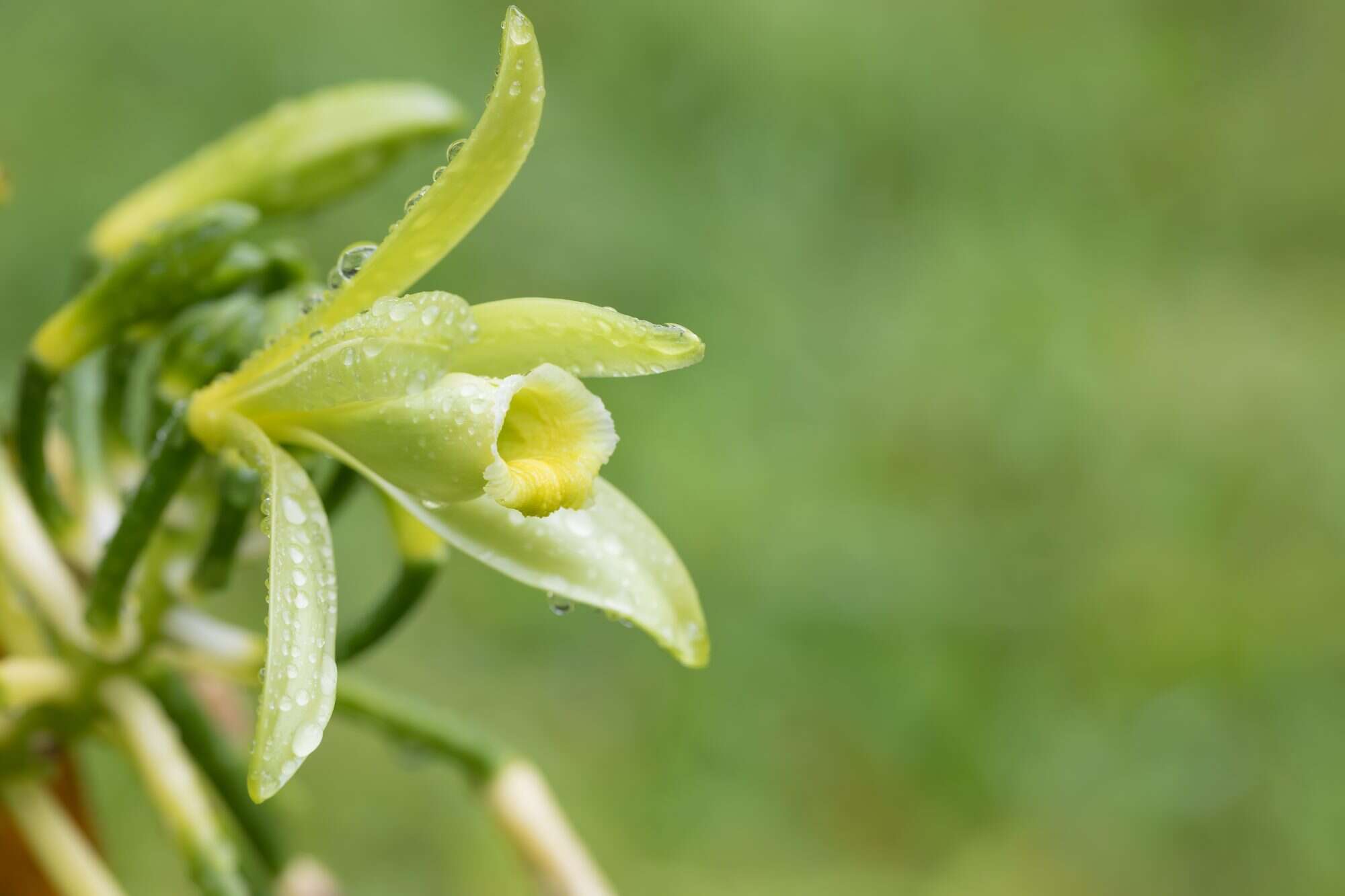
Flowers are the most important and curious part of the Vanilla vine! Clusters of trumpet-shaped flowers range in color from cream to yellow to green. There are three sepals on the flower.
Racemes (flower stalks) are inconspicuous and yield more than 20 greenish-yellow blooms. The anther (male organ) is separated from the stigma by the rostellum (thin flap) (female organ). If the rostellum is gone, pollen cannot reach the stigma from the anther.
The flowers appear in the third year after planting. Approximately 7-8 years are necessary for optimal blossom output.
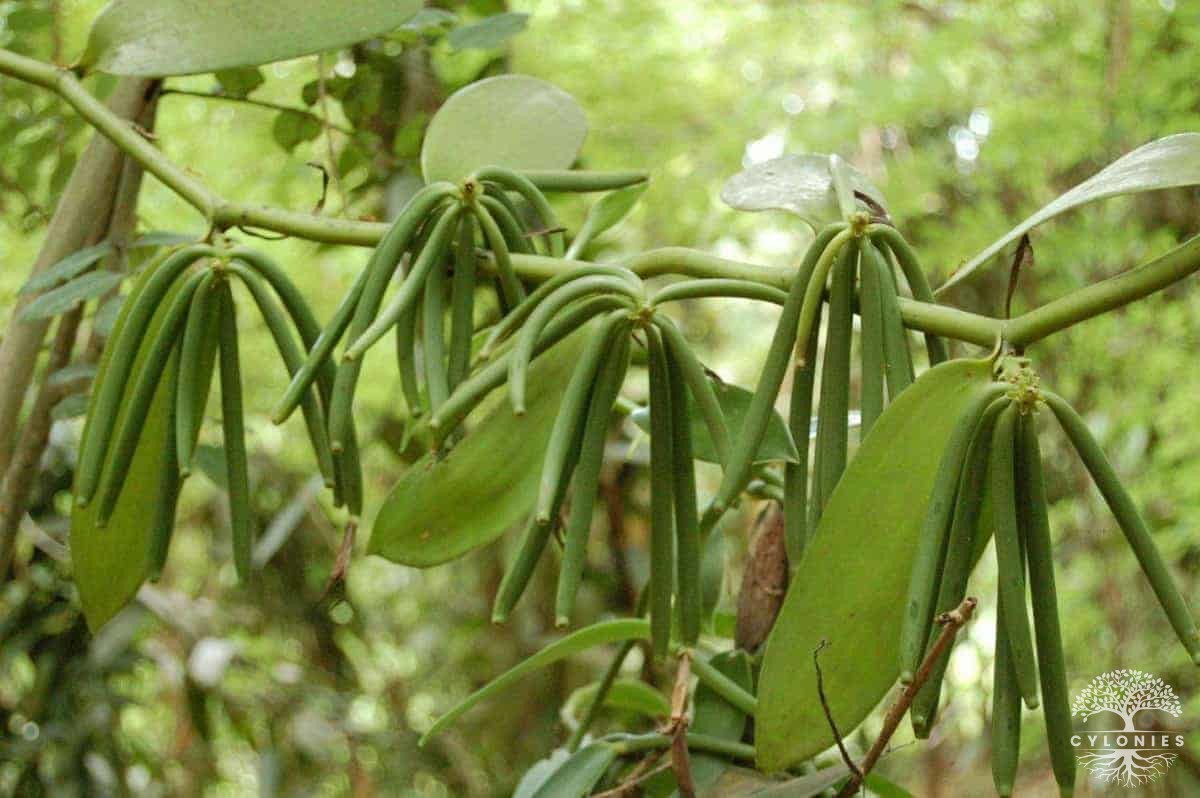
If pollination is successful, flowers produce fruits in the shape of pods or capsules. These pods are known commercially as beans!
The primary chemical compounds extracted from vanilla beans are vanillin, vanillic acid, 4-hydroxybenzoic acid, p-hydroxybenzyl alcohol, and 4-hydroxybenzaldehyde.
Vanillin is employed as the predominant flavor backbone, accounting for 1.52 percent to 2.42 percent of the bean's dry weight. Vanillin and piperonal present in vanilla are responsible for the delicious taste good and provide health benefits
The vanilla flavor is derived from a vast and diverse blend of chemical components. Vanilla has about 170 volatile components that exist below 1 ppm.

Flavor constituents are found inside the vanilla beans and secreted onto the placental region around the seeds. The release of flavor constituents to flavor compounds is catalyzed by the degradative or hydrolytic enzymes, which are located outside the fruit wall region.
Several factors influence the chemical components of vanilla beans, including growing circumstances, species, soil composition, fruit development, and processing.

To get the right scent and taste from your vanilla beans, it's critical that they're properly cured. Processing vanilla beans entails promoting the growth of vanillin as well as the gradual drying of the bean to preserve it.
Quality standards The aroma/flavor profile is the major quality criterion for cured vanilla beans.
Other important quality rating parameters include the overall look, elasticity, length, and vanillin content.
The relative relevance of these distinct quality traits is determined by the cured beans' intended end-use.
Traditionally, the appearance, flexibility, and size features have been important since they have a pretty tight association with the aroma/flavor quality.
Top-quality beans are long, fleshy, supple, very dark brown to black in color, somewhat oily in appearance, strongly aromatic and free from scars and blemishes.
There are various subtleties to the Vanilla curing process as practiced by curers worldwide.

The most important feature of top-grade vanilla is the careful selection of harvest time.
After nine months of blooming and pollination, vanilla beans are generally ready for harvesting. When the beans are fully matured, they are harvested one at a time.
This is seen by the appearance of the beans and their color as they begin to ripen. The color of the beans changes from dark green to light and yellow at the tip when they are mature.
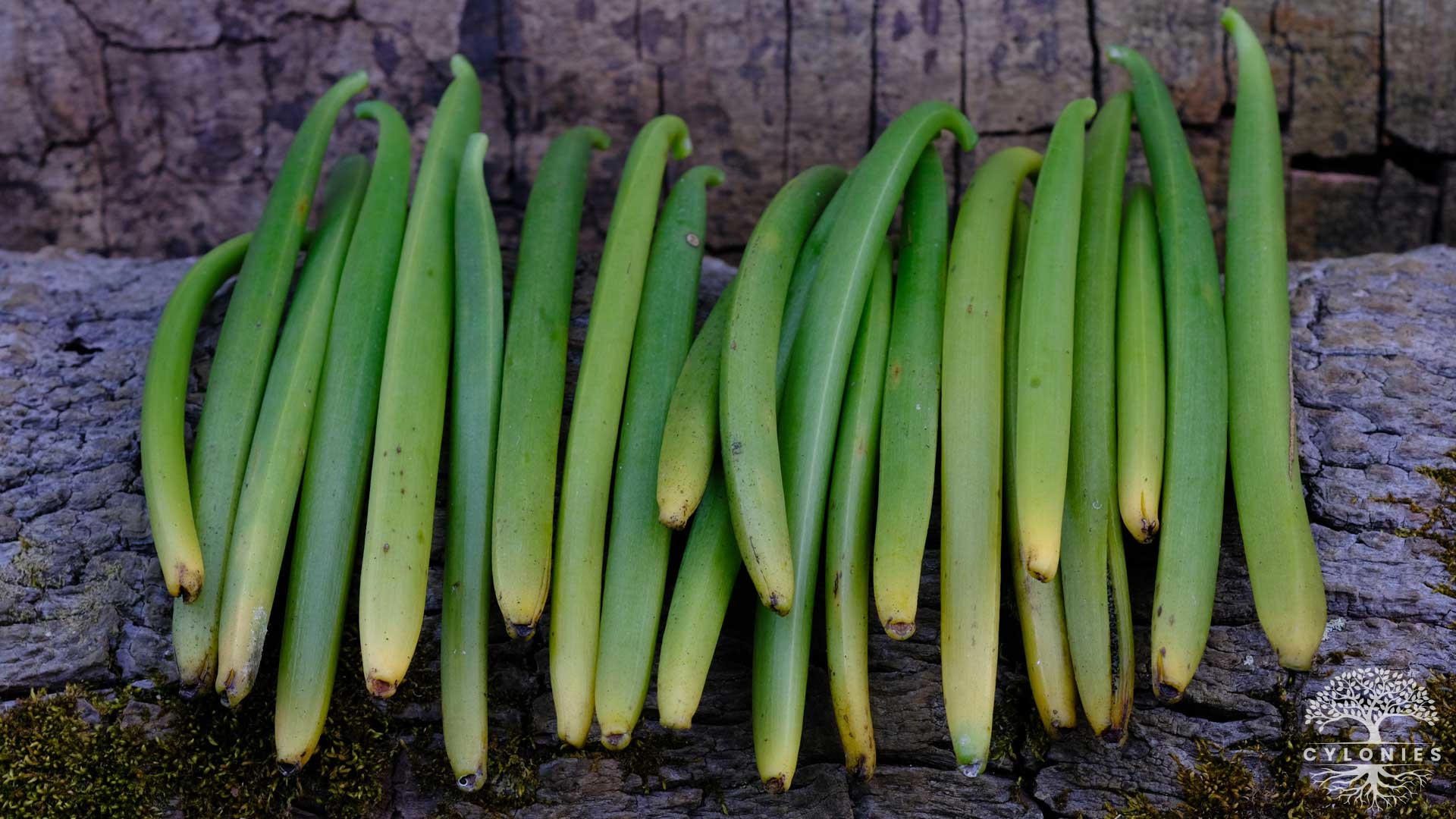
As a result, more trips by the planter are necessary to collect the beans at the proper stage, which should be done many times each week as they grow.
Because green beans have no scent or vanillin, processing should begin as soon as possible, ideally within a week following harvest.
The sorting procedure prioritizes size and appearance, which are critical to the quality of vanillin present and scent.
Beanas are categorized as A,B,C, and D in the green stage based on bean length. Those that are longer than 15 cm are categorized as A grade. B grade is between 10-15 cm, while C grade is less than 10 cm. Those that are split, cut, injured, or bruised are graded as Grade -D.
The sorted and graded beans are then cleaned and washed in clear, clean water. Bordeaux stains and chemicals, if present, are properly removed and can be swabbed with concentrated tamarind water or sour buttermilk.
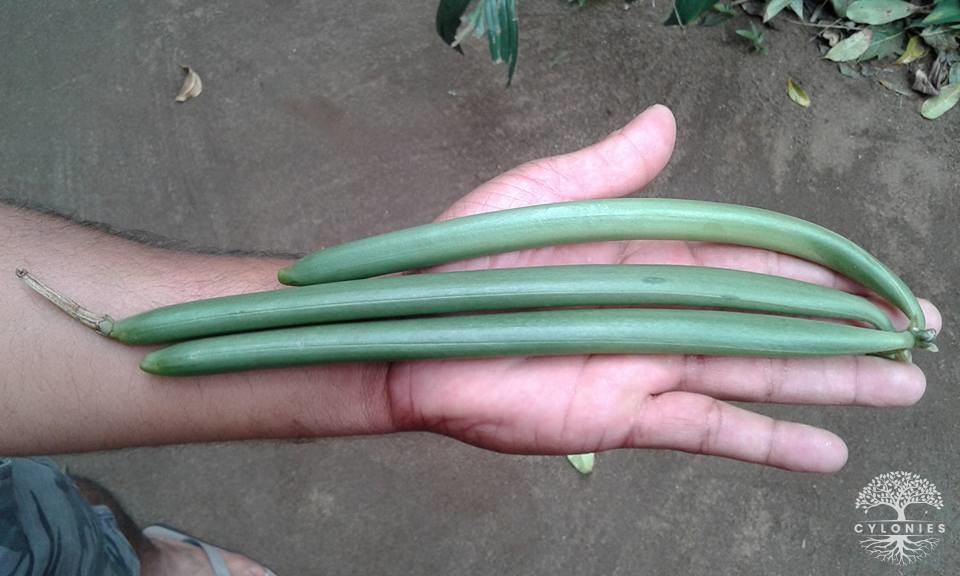
This halts further vegetative development in the fresh bean and initiates the enzymatic reactions that produce aroma and flavor. The development of a brown hue in the bean indicates that it has been killed.
The killing time for sorted and graded beans varies because it influences the stopping of vegetative development and regulating chemical changes in the beans and is a critical phase in the process.
Growers often dip or dunk the beans in regulated hot water with a bath temperature of 65 C maintained for a certain time range depending on the grade.
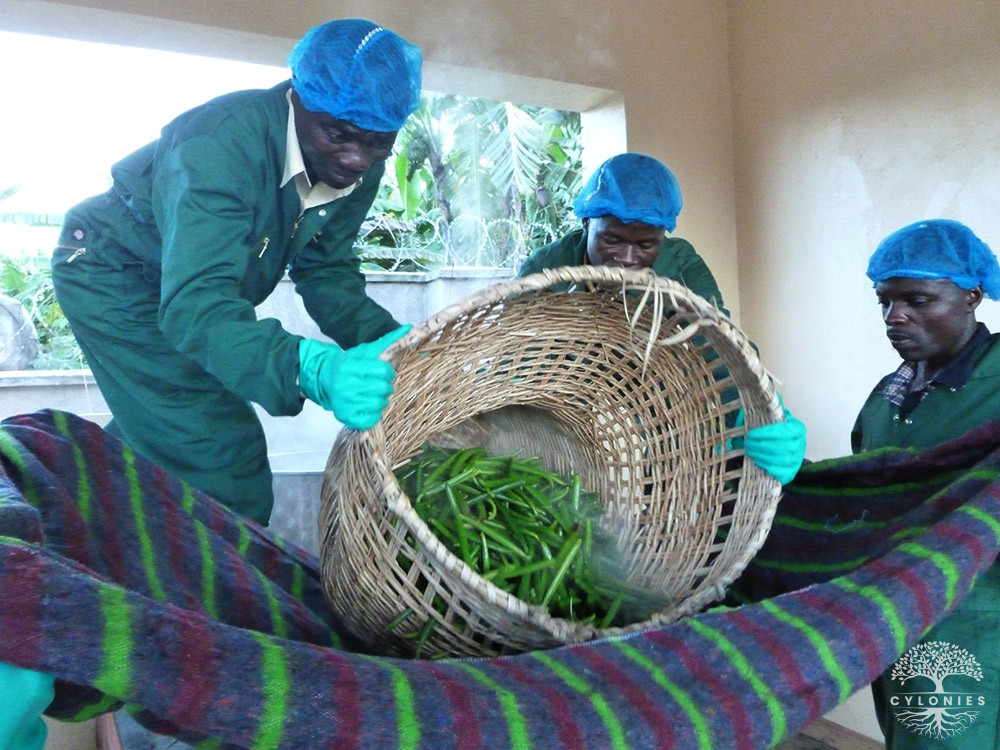
This entails increasing the temperature of the dead beans in order to stimulate the appropriate enzymatic processes and to cause a first, relatively quick drying in order to prevent undesirable fermentations.
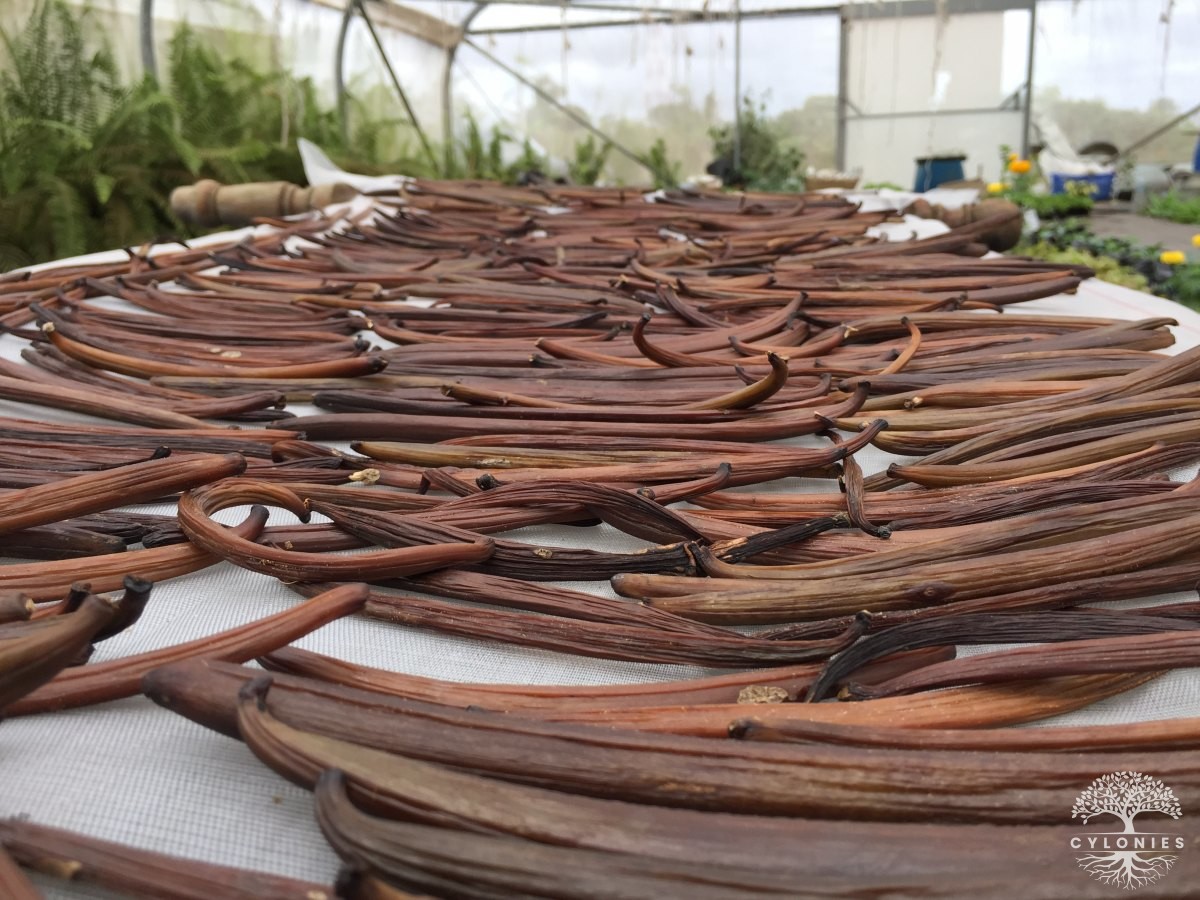
During this process, the beans grow a darker brown color and become fairly supple, as well as the production of a fragrance.
The slain beans are then placed in a box coated with woolen blankets or insultate to keep the temperature at 48-50 C for the sweating process to continue for a period of 24- 40 hours, with the entire beans transforming to a supple Brown color with vanilla scent.

Depending on the bean quality sun drying for 7 days from 11 am to 2 pm is done and once the bean temperatures raise to 50* C the beans are wrapped in woolen blanket and stored in wooden chests.
This step involves gentle drying at room temperature, generally in the shade, until the beans have lost one-third of their original weight.
There are two types of drying that help to reduce the moisture content of the beans to less than 25%.
Sun-drying for a week or so is then done. The beans are spread on wooden slats, shelves, or clean blankets on a flat surface from 12 AM to 3 PM or so until they attain a uniform temperature of 50 - 55 C, at which point they are wrapped in blanks and relocated back to the bundles to continue sweating.
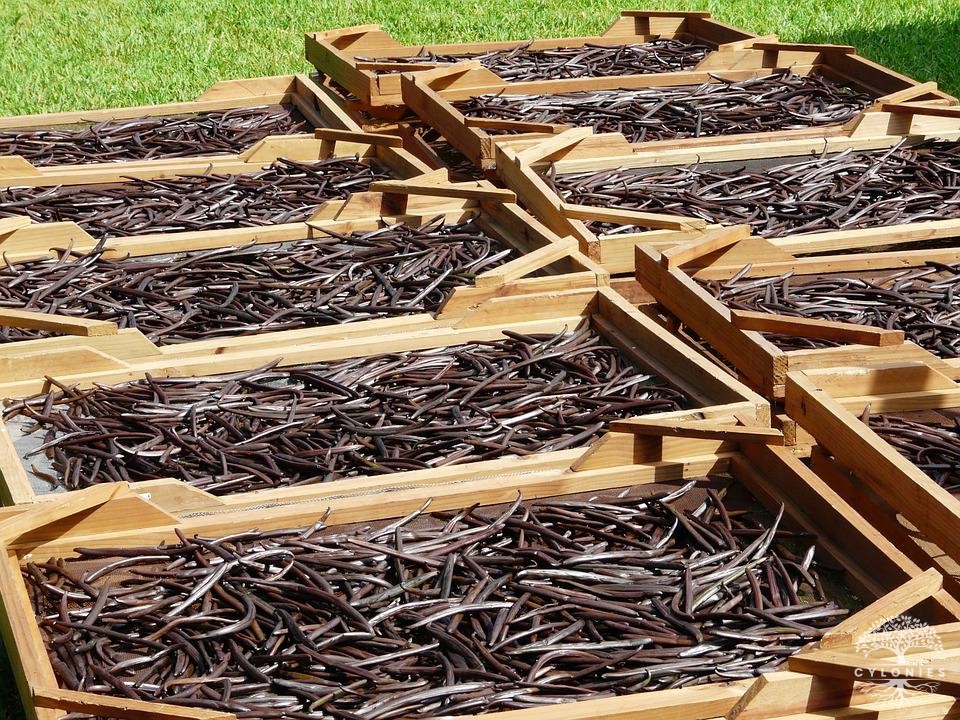
It is better to keep it in a hot, dry environment in order to achieve homogeneous moisture loss.
By the conclusion of the period, the beans have lost half their weight and had taken on a gleaming dark brown color with a deep scent. If possible, knead the beans in between your fingers to increase their elasticity and texture.
In the next stage, called as 'conditioning,' the beans are held in tight boxes for three months or longer to allow the ideal fragrance and flavor to fully emerge.
Slow curing is a long process that involves seasoning the beans in a controlled air temperature and humidity system. Beans are often stored in trays and racks with two or three layers to provide uniform drying exposure.
Normally, the temperature in these rooms is kept at 35 degrees Celsius and the humidity at 65-70 percent. Each grade's slow drying time varies according to its quality.
After gradual curing, the beans have a homogeneous texture, shrink to have longitudinal lines, change glossy and brownish chocolate color, and become very soft.
They are pleasant to the touch and may be wrapped around your finger like an elastic band. The moisture content might be between 30 and 35 percent.
After open curing, bundles of beans are kept within a dry box of wood or metal caskets for approximately one to two months. Typically, the beans are strung together, packaged, and wrapped in oiled wax paper chosen for seasonal conditioning. It is preferable to have it in a warm environment of 30-35 *C.
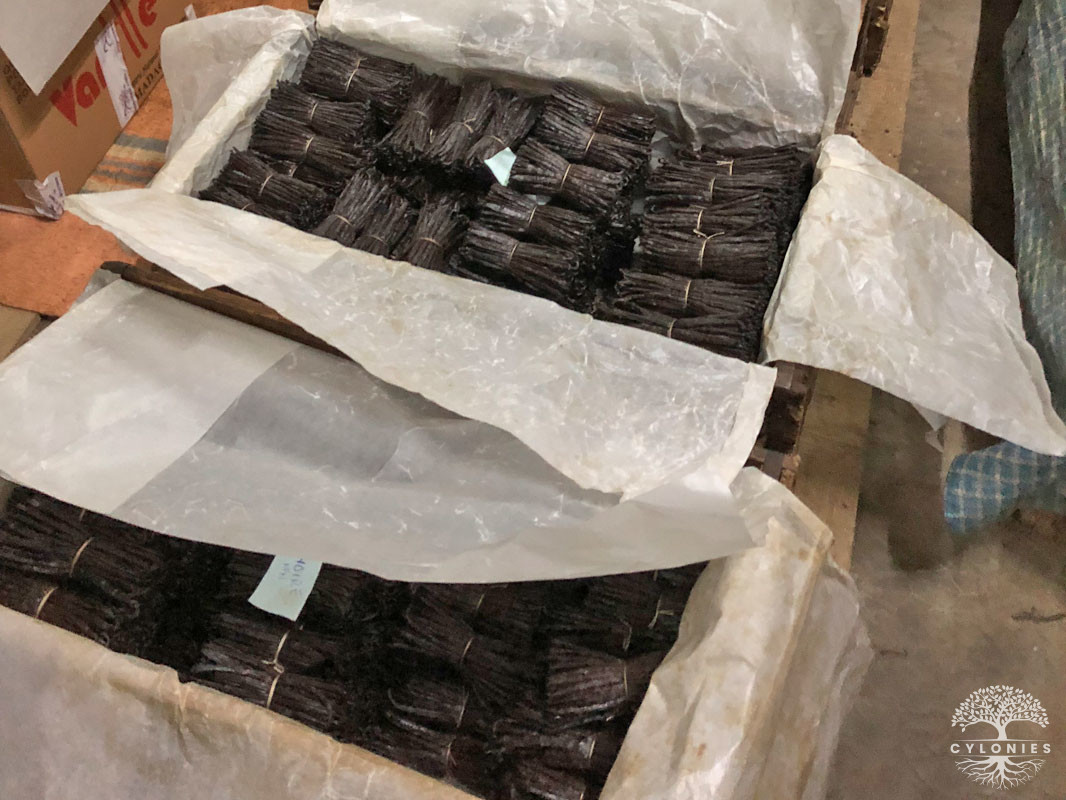
This helps to get the moisture to approximately 25%, which is acceptable by international standards. Depending on the grade, a weight loss of 4.5-1 or 6-1 is typical in the procedure, depending on the quality and kind of beans.
To minimize additional moisture loss and mold growth, store them in airtight containers.
Bourbon vanilla is a product from the former French colonies in the Indian Ocean that uses a curing process invented on the island of Reunion, previously known as Bourbon.
The Bourbon curing procedure differs from other methods in that the beans are killed by scorching in hot water rather than sweating. The Bourbon product is generally frosted and has a higher moisture level than the similar Mexican grade.
The entire curing time for Bourbon vanilla is 5 to 8 months.
